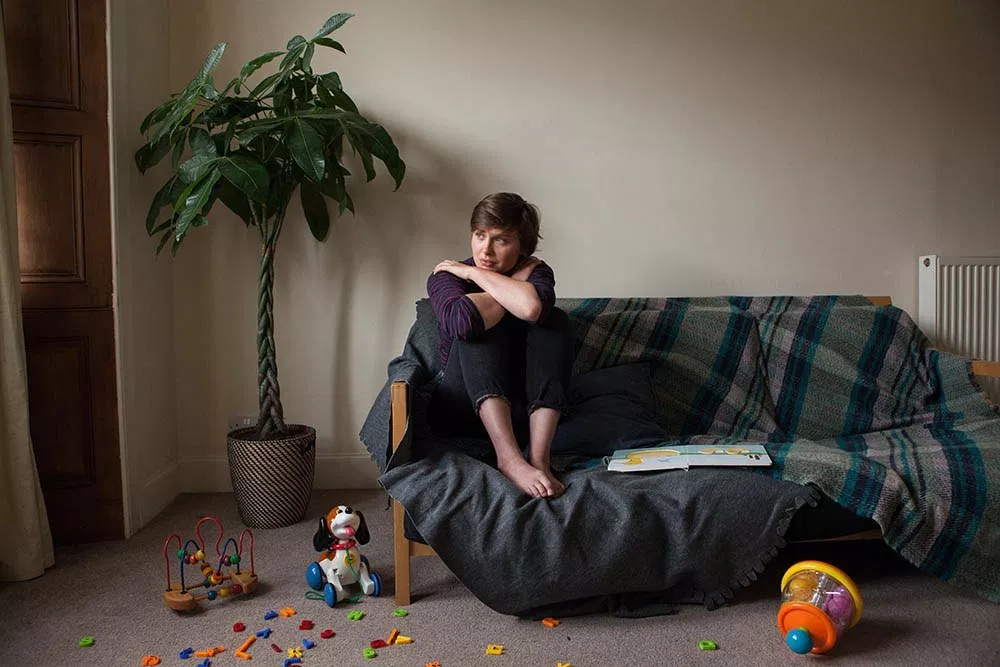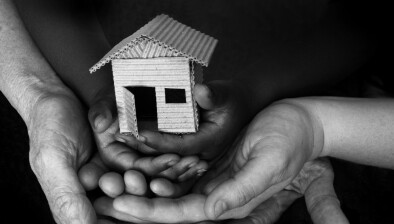Housing providers unite to tackle leading cause of women’s homelessness
New guidance has been launched today to help social landlords and local authority housing providers offer a safer and more consistent approach to domestic abuse – the number one cause of women and children’s homelessness in Scotland.

Current housing policy and practice responses are based on expecting women and children experiencing domestic abuse to leave their homes, rather than perpetrators. Many women looking for support are made homeless by the very services that are meant to help them: forced to leave the family home and then move multiple times.
In 2017-18, 78% of homelessness applications where ‘a dispute within the household (violent or abusive)’ was given as the reason for the application came from women, and more than half had children on their application.
That’s why Scottish Women’s Aid and partners felt it was necessary to work together to develop specific guidance for social landlords.
The charity has partnered with the Association of Local Authority Chief Housing Officers (ALACHO), CIH Scotland, the Scottish Federation of Housing Associations (SFHA) and Shelter Scotland to produce a good practice guide on domestic abuse for social landlords to help them prevent women and children’s homelessness and provide a service that is sensitive to their needs.
The guidance includes good practice examples, checklists for best practice in responding to domestic abuse and templates for domestic abuse policies. The guide also features first-hand accounts from women who had been made homeless as a result of domestic abuse and the challenges they faced when seeking help from their local council, often having to repeat and retell their stories in a way that is re-traumatising.
One woman said: “Having to repeat my circumstances over and over again was humiliating and distressing to me. I was also worried about a negative reaction of not being believed every time I had to explain to a new person.”
Jo Ozga, policy officer at Scottish Women’s Aid, said: “Domestic abuse is a violation of human rights and those rights are further denied if public services do not respond to abuse and if policies do not prevent it. Often women are told that their only housing option when they are separating from an abusive partner is to make a homeless application. Being forced to become homeless adds to the trauma of domestic abuse and comes at a huge emotional and financial cost.
“Women are hugely concerned about the impact on their children of having to leave their home, often moving multiple times. This impacts on children’s emotional wellbeing and health, and their education if they have to move school. They can also experience bullying, loss of friends and support at a time when they really need it.
“This new guidance will be available to every social landlord and every local authority in Scotland, meaning the potential is there to change the future for thousands of women and children.
“We know there is more to do and we will continue to campaign for a gendered approach to homelessness in Scotland. However, we believe this good practice guide will be an invaluable tool in improving the responses to women, children and young people experiencing the trauma of coercive control and we will work with our partners to ensure consistency in those responses.”
Sally Thomas, SFHA chief executive, said: “No woman or child should ever become homeless fleeing domestic abuse. This guidance is a significant step forward in ensuring that is the case and I urge all senior staff across our sector to implement it in its entirety throughout their organisations.”
Callum Chomczuk, national director of CIH Scotland, said: “Victims of domestic abuse, like all of us, rely on housing, but our sector has much to do to help those at risk of – or experiencing – domestic abuse. Too many housing organisations do not have a policy which recognises domestic abuse. This means that victims are, at times, made homeless by the services that are meant to help them. In Scotland, domestic abuse is given as the main reason by women making a homeless application.
“That is why this guidance for social landlords is so important. Victims of abuse cannot afford to wait any longer. It will set out a clear framework so landlords not only ensure victims have a secure, stable home but they can then build care and support services around that person’s needs.”
Alison Watson, deputy director of Shelter Scotland, said: “At Shelter Scotland we know that there are many reasons for homelessness and domestic abuse is often an issue that our helpline advisers have to deal with.
“At a time of great personal trauma and uncertainty – with many different factors in place for each case – guidance that brings a safe and more consistent approach is good news for people experiencing homelessness as a result of domestic abuse.”
Annette Finnan, ALACHO co-chair, said: “The sector has been too slow to see the need to improve our approach to domestic abuse. I’m confident that the publication of this new guidance and our working relationship with Scottish Women’s Aid and others will provide the impetus we need to start to get it right for those facing the challenges of moving on from domestic abuse.”







